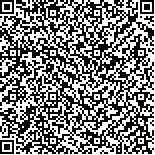吴少璞,李学,祁亚伟,等.音乐运动疗法联合经颅直流电刺激对帕金森病患者运动及认知功能的影响[J].中华物理医学与康复杂志,2023,45(8):678-682
扫码阅读全文

|
| 音乐运动疗法联合经颅直流电刺激对帕金森病患者运动及认知功能的影响 |
|
| |
| DOI:10.3760/cma.j.issn.0254-1424.2023.08.002 |
| 中文关键词: 帕金森病 音乐运动疗法 经颅直流电刺激 运动功能 认知功能 |
| 英文关键词: Parkinson′s disease Music exercise therapy Transcranial direct current stimulation Motor functioning Cognitive functioning |
| 基金项目:河南省科技厅科技攻关项目(162102310283);河南省医学科技攻关计划项目(SBGJ202002005) |
|
| 摘要点击次数: 4351 |
| 全文下载次数: 4261 |
| 中文摘要: |
| 目的 观察音乐运动疗法联合经颅直流电刺激(tDCS)对帕金森病(PD)患者运动、平衡及认知功能的影响。 方法 采用随机数字表法将120例PD患者分为对照组、音乐运动组、tDCS组和联合组,每组30例。4组患者均给予常规康复训练,音乐运动组、tDCS组在此基础上分别给予音乐运动训练或tDCS治疗,联合组则辅以音乐运动训练及tDCS联合治疗。于治疗前、治疗4周后分别采用统一帕金森病评分量表第三部分(UPDRS-Ⅲ)、10 m折返运动试验、Berg平衡量表(BBS)、活动平衡信心量表(ABC)及蒙特利尔认知评估量表(MoCA)对4组患者的运动、平衡及认知功能进行评定。 结果 经治疗4周后,发现音乐运动组UPDRS-Ⅲ评分、10 m折返运动计时、BBS评分及ABC评分均明显优于对照组(P<0.05);tDCS组MoCA各项指标评分及总分均明显优于音乐运动组和对照组(P<0.05);联合组UPDRS-Ⅲ评分、10 m折返运动计时、BBS评分、ABC评分、MoCA各项指标评分及总分均显著优于对照组、音乐运动组及tDCS组(P<0.05)。 结论 音乐运动训练联合tDCS可进一步改善PD患者的运动、平衡及认知功能,该联合疗法值得临床推广、应用。 |
| 英文摘要: |
| Objective To observe any effect of combining music exercise with transcranial direct current stimulation (tDCS) on the motor control, balance and cognition of persons with Parkinson′s disease (PD). Methods A total of 120 PD patients were randomly divided into a control group, a music exercise group, a tDCS group and a combined group, each of 30. All received routine rehabilitation training, while the music exercise, tDCS and combined groups were additionally provided with music exercise therapy, tDCS treatment or both, respectively. Version three of the unified Parkinson′s disease scale (UPDRSIII), a 10m reentry movement test, the Berg balance scale (BBS), the Activity Balance Confidence scale (ABC) and Montreal cognitive assessments were applied before and after 4 weeks of the treatments. Results After the treatment, the average UPDRSIII score and 10m reentry movement time of the music exercise group were significantly lower than in the control group, while the average BBS and ABC scores were significantly higher than the control group′s averages. The tDCS group′s average MoCA scores on all of the items and its total score were significantly higher than those of the music exercise and control groups. The average UPDRSIII score and 10m reentry movement time of the combined group were the lowest after the treatment, and that group′s average BBS, ABC, MoCA and total scores were the highest, significantly better than the other three groups. Conclusion Combining music exercise training with tDCS can effectively improve the motor functioning, balance and cognition of persons with PD. |
|
查看全文
查看/发表评论 下载PDF阅读器 |
| 关闭 |
|
|
|